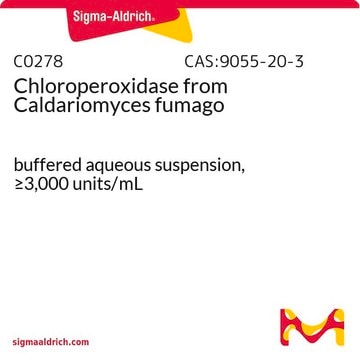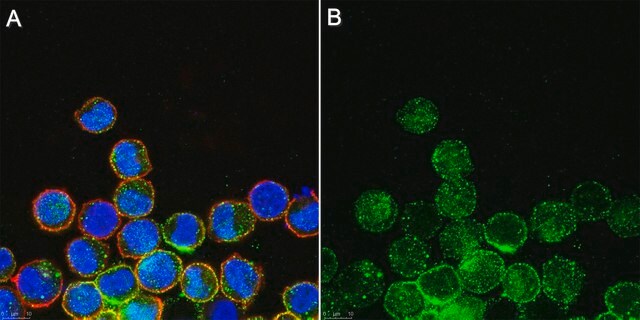C0887
Chloroperoxidase from Caldariomyces fumago
buffered aqueous suspension, 1,000-2,000 units/mg protein (E1%/280)
Synonym(s):
Chloride Peroxidase, Chloride:hydrogen-peroxide oxidoreductase
About This Item
Recommended Products
biological source
fungus (Caldariomyces fumago)
form
buffered aqueous suspension
specific activity
1,000-2,000 units/mg protein (E1%/280)
mol wt
42 kDa
absorbance ratio
RZ ~1.0
storage temp.
2-8°C
Looking for similar products? Visit Product Comparison Guide
Application
Biochem/physiol Actions
Unit Definition
Physical form
inhibitor
Storage Class Code
12 - Non Combustible Liquids
WGK
WGK 1
Flash Point(F)
Not applicable
Flash Point(C)
Not applicable
Personal Protective Equipment
Certificates of Analysis (COA)
Search for Certificates of Analysis (COA) by entering the products Lot/Batch Number. Lot and Batch Numbers can be found on a product’s label following the words ‘Lot’ or ‘Batch’.
Already Own This Product?
Find documentation for the products that you have recently purchased in the Document Library.
Our team of scientists has experience in all areas of research including Life Science, Material Science, Chemical Synthesis, Chromatography, Analytical and many others.
Contact Technical Service







